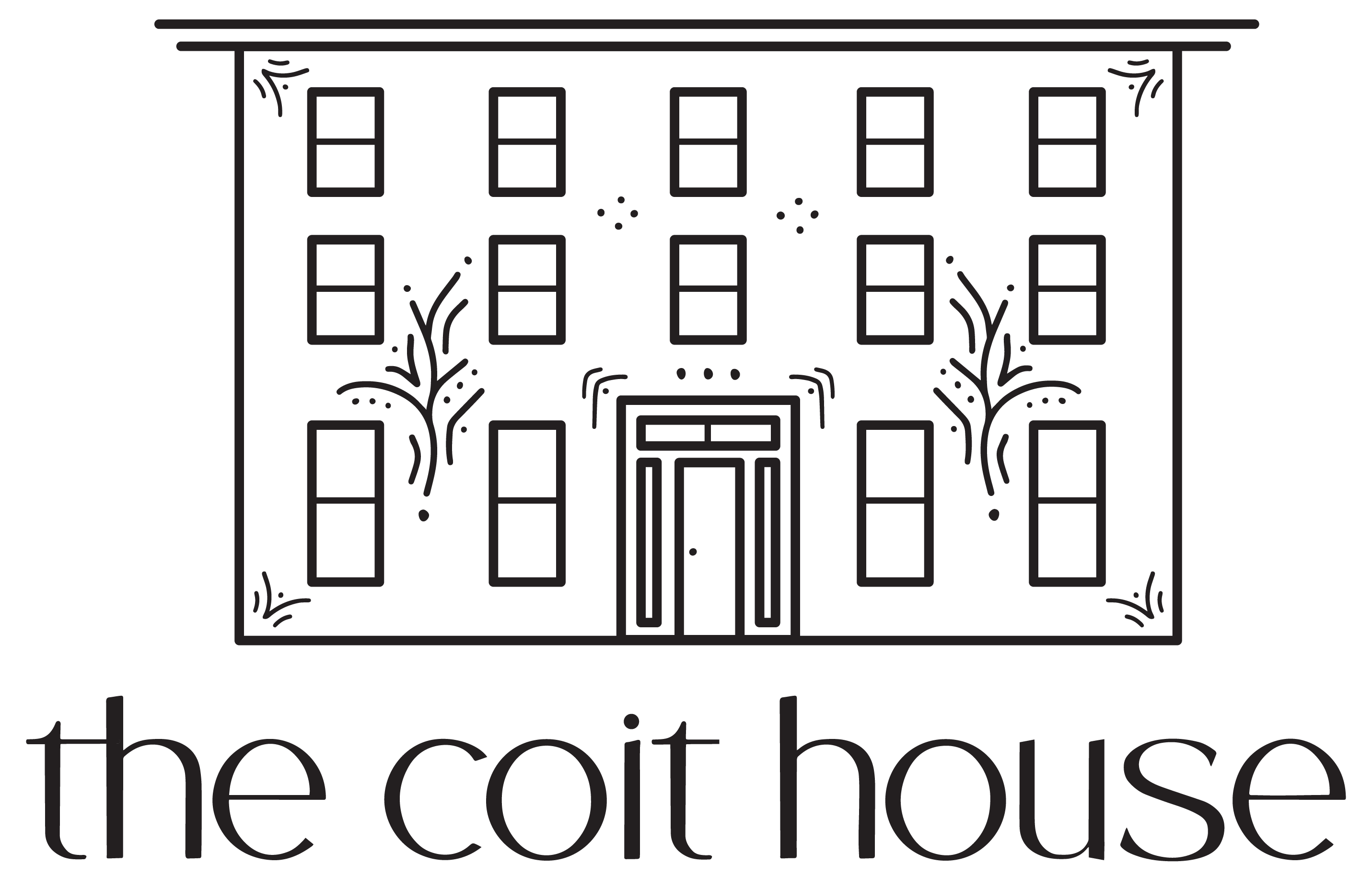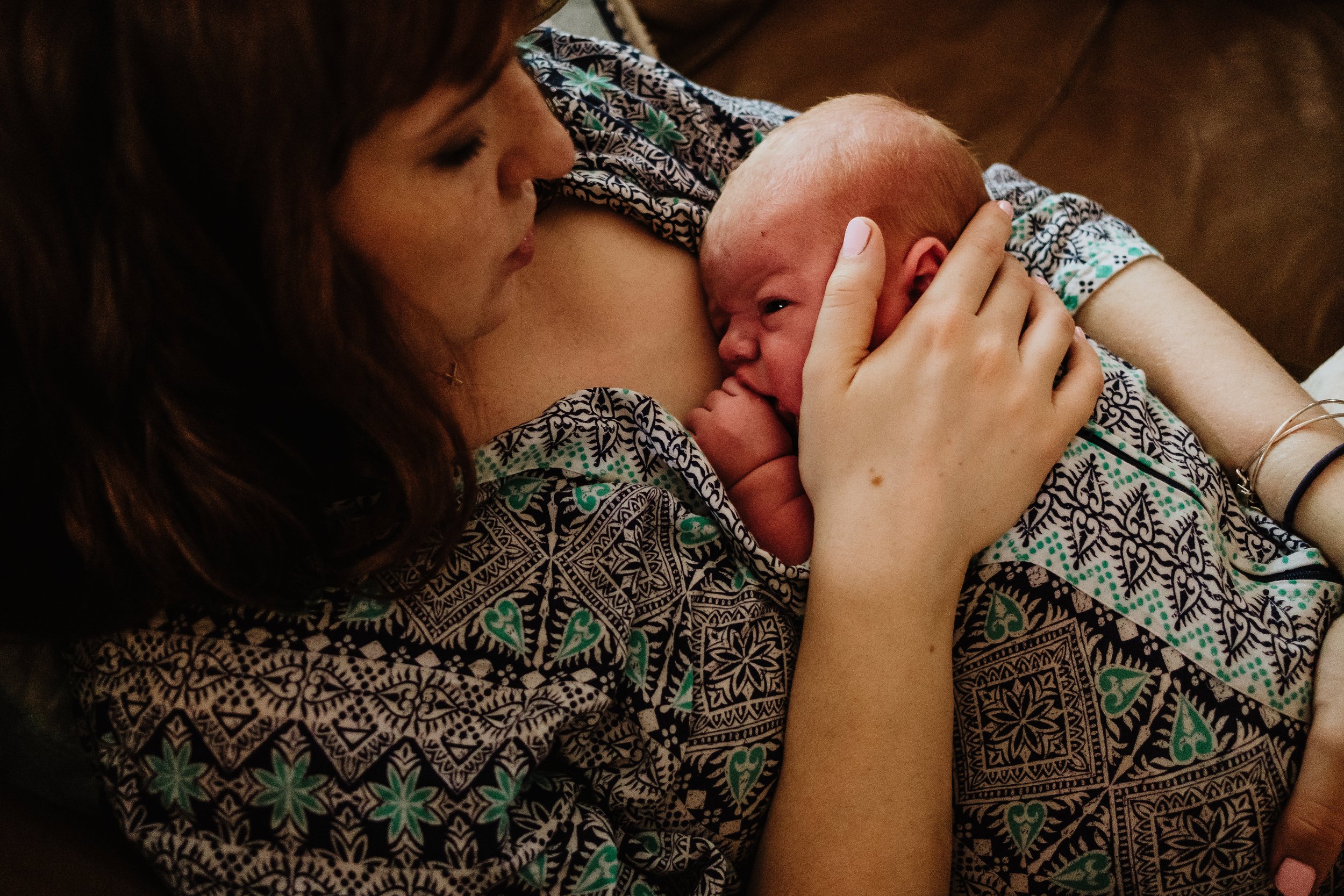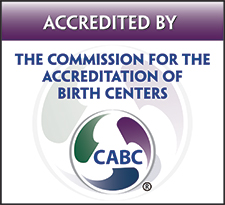One of the best things about community birth is the exceptional postpartum care. Early discharge from the birth center means that you and your family get to snuggle in your own bed and enjoy the comfort of home just a few hours after your baby is born. We want to make sure our clients feel supported, healthy, and cared for in those early days with their new babies, which is why we provide an initial postpartum visit 24-36 hours after a Coit House birth and about one week after a hospital birth for those who require transfer.
Most of our clients come back to the Coit House for their first postpartum visit. When you arrive, you can make yourself comfortable on one of the sofas in our first floor living room (don’t worry – no stairs!), and our staff will close the doors to give your family privacy. You’ll then be joined by the midwife or one of our wonderful nurses, who will give both you and your baby a complete check-up.
During the visit, the provider will take your blood pressure and temperature. She’ll also assess your breasts/chest and may ask to see a latch to ensure nursing is going well. She can give you tips and answer any questions you have about breast/chestfeeding, which can be quite a challenge in the newborn days. The midwife or nurse will also check your abdomen, to make sure you aren’t experiencing any tenderness and that your uterus is healing well after pregnancy and birth.
At this visit, you’ll be asked about your lochia, which is the vaginal discharge your body releases after birth. Note the color, amount, odor, and any clots. Most people experience bright or dark red lochia with or without some small clots for the first one to two weeks postpartum. The flow is usually similar to a heavy menstrual period, and will gradually decrease in amount. Lochia then transitions to brick red, then pink, then yellow, then white, before it disappears completely. The timing of this transition varies from person to person, but generally takes about four to six weeks. If you have pass clots larger than a golf ball or if you’re soaking through a pad per hour for three to four hours, give the midwife a call right away; don’t wait for your postpartum visit.
The midwife or nurse will also ask about your perineum. Many people have hemorrhoids, swelling, or bruising after birth, and some may have stitches. She can offer tips to promote healing and can give you a quick exam if you have any concerns. She’ll then ask about your general wellbeing: what you’ve been eating and drinking, whether you’ve been getting enough rest and what your activity level has been, how your mood has been, who is supporting you and what kind of help they’re providing.
Next, it’s time for your baby’s check-up. Before you’re discharged from the birth center, you’ll be given a tote bag filled with postpartum goodies. There is also a small plastic box that contains some items the midwife or nurse will use to care for your baby during the first postpartum visit. This is the newborn kit. Make sure to bring this with you to your first postpartum visit. The newborn kit includes:
-
Newborn Hat – Keeps baby’s head warm!
-
Baby Bottom Oil Vial – Put a few drops on baby’s bottom during diaper changes to make those super sticky meconium poops easier to clean off.
-
Goldenseal Capsule – This helps baby’s cord heal and dry quickly. Open capsule and sprinkle powder on baby’s cord stump once daily for the first day or two postpartum. One capsule can be used at least twice.
-
Infant Heel Warmer – Used by midwife or nurse to warm baby’s heel for optimal blood flow before metabolic screen.
-
Alcohol Pad & Gauze – Used to clean baby’s heel before metabolic screen.
-
Gentle Heel – Used by midwife or nurse for the heel stick.
-
Newborn Screening Form and Envelope – Used by midwife or nurse to collect the blood sample for the metabolic screen and send in to the state.
-
Newborn Bandaid – Used after heel stick.
-
Foam Pulse-Ox Band – Used to hold pulse-ox sensor on baby’s foot and hand for the Critical Congenital Heart Disease (CCHD) screening.
The midwife or nurse will begin by taking your baby’s temperature and pulse. She’ll also take a thorough look at your baby to assess their color, hydration, muscle tone, and reflexes. She’ll ask about your baby’s sleeping and waking patterns, their wet and dirty diapers (your baby should have one of each by 24 hours), and how often they’ve been feeding. The midwife or nurse will then want to see the cord to make sure there are no signs of infection, and she’ll remove the clamp. She can also help you apply the goldenseal to aid in healing.
There are two routine newborn screenings provided at the initial postpartum visit for babies born at the Coit House. The first is the Newborn Metabolic Screen, which tests for 50 different disorders, most of which are genetic. Although all of these issues are rare, early intervention provides babies who do screen positive for one or more disorders with the best outcomes. You can, however, decline this screening if you would prefer. During the Newborn Metabolic Screen, you will hold your infant in your arms and can nurse at the same time, if that is most comfortable for you and your baby. The midwife or nurse will warm your infant’s foot using a heating pad to help get blood flowing. She’ll then use an alcohol pad and gauze to clean the area before giving your baby a gentle heel stick. She’ll use a form provided by New York State to take tiny samples of your baby’s blood before giving your baby an extra small band aid. The test form is then sent to New York State, and we will let you know the results when we get them. Very occasionally, a second test will be indicated, although this is usually not due to a baby having one of these disorders but rather an issue with the sample. We know that no one wants to think about a blood test on their brand new baby, but our staff do this screening as gently as possible. Some babies even sleep right through it!
The next screening is for Critical Congenital Heart Disease (CCHD). CCHD represents a group of heart defects that can cause serious, life-threatening symptoms. These conditions are often treatable with early detection and intervention. During this screening, the midwife or nurse will wrap a foam band attached to a pulse oximeter to your baby’s foot and hand. The pulse oximeter is used to measure the oxygen saturation levels in your baby’s bloodstream. Although it’s incredibly rare for a baby to need additional testing after this screening (it’s only happened once since our practice was founded in 2017), if your baby’s oxygen saturation levels were lower than expected, you’ll be referred to Oishei Children’s Hospital for further assessment.
After this first postpartum visit, you’ll have a telemedicine appointment (your choice of video or phone call) with the midwife three to five days after birth to check in again on you and baby. Then, you should set up an appointment with your pediatrician for seven to ten days after birth. We will fax all of your newborn’s records to your pediatrician in advance. We also provide a referral for the newborn hearing screening, which needs to be done within the first couple weeks of life. Most of our clients go to Diversified Hearing for this test, which has several locations throughout Western New York. This screening is non-invasive and assesses your baby’s response to sounds while they are resting or sleeping.
Most of our clients come back to the Coit House for two week and six week office visits. We are here to provide as much care as you need to ensure your physical and emotional wellbeing – so if you have concerns that come up before your scheduled appointments, reach out to the midwife using your patient portal or give our office a call. If you’d prefer to be seen in person by one of our providers outside of routine appointments, we are happy to set up additional postpartum or lactation visits anytime!
Author Mary Badame is the Quality Assurance Manager at Fika Midwifery and is a passionate advocate for midwife-led care, increased birth options, and better reproductive healthcare for everyone.
